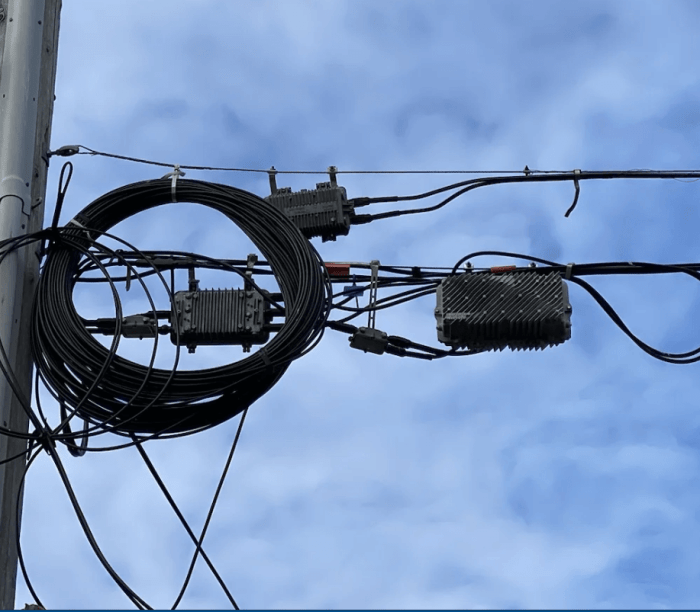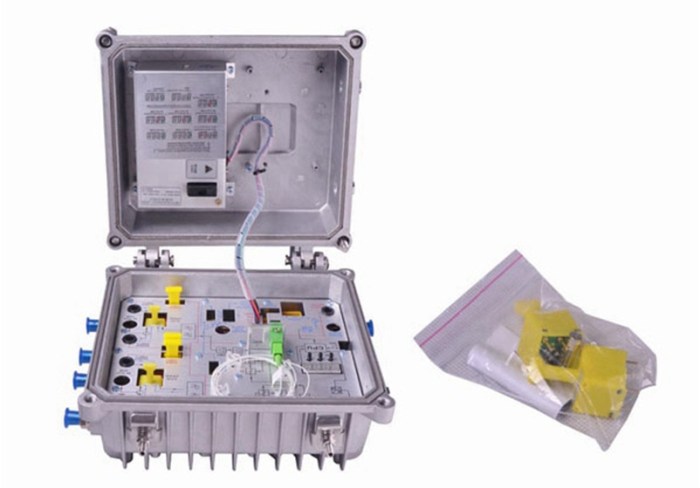What do you call the demarcation point for fiber technologies? It’s a critical boundary that separates the responsibilities of different entities in a fiber network. Understanding demarcation points is essential for efficient network management, troubleshooting, and compliance with industry standards.
Demarcation points serve as the dividing line between the network infrastructure owned and managed by the service provider and the customer’s premises equipment. Establishing clear demarcation points ensures that each party is responsible for maintaining and troubleshooting their respective portions of the network.
What do you call the demarcation point for fiber technologies?

In fiber technologies, the demarcation point (demarc) refers to the physical boundary that separates the responsibility for maintaining and operating a fiber network between two different entities, typically the service provider and the customer.
Demarcation points are commonly located at the point where the fiber optic cable enters the customer’s premises, such as at the network interface device (NID) or optical network terminal (ONT).
Establishing demarcation points serves several purposes, including defining the limits of each party’s maintenance and support obligations, facilitating troubleshooting and repair processes, and ensuring compliance with industry standards and regulations.
Types of Demarcation Points
There are different types of demarcation points used in fiber networks, each with its own characteristics and applications:
- Network Interface Device (NID):A device that provides the physical interface between the service provider’s network and the customer’s premises. It typically houses the fiber optic termination points and may also include other network components such as splitters and attenuators.
- Optical Network Terminal (ONT):A device that converts optical signals from the service provider’s network into electrical signals for use by the customer’s equipment. It is commonly used in fiber-to-the-home (FTTH) deployments.
- Fiber Distribution Hub (FDH):A central point in a fiber network where multiple fiber optic cables are connected and distributed to different locations. FDHs can serve as demarcation points between different network segments or between the service provider and multiple customers.
- Cross-Connect (XC):A device that allows for the reconfiguration of fiber optic connections. It can be used as a demarcation point to facilitate network changes or troubleshooting.
Importance of Demarcation Points
Demarcation points play a crucial role in fiber networks for several reasons:
- Clear Responsibility Boundaries:Demarcation points clearly define the maintenance and support responsibilities of the service provider and the customer, ensuring that each party is accountable for their respective portion of the network.
- Simplified Troubleshooting:By isolating network segments, demarcation points make it easier to identify and resolve issues, reducing downtime and improving network performance.
- Enhanced Network Management:Demarcation points facilitate network management by providing a reference point for monitoring and controlling different network segments.
Standards and Regulations, What do you call the demarcation point for fiber technologies
There are several standards and regulations that govern demarcation points in fiber technologies, including:
- TIA-568.3-D:This standard defines the physical infrastructure requirements for telecommunications pathways and spaces, including the location and installation of demarcation points.
- IEEE 802.3ah:This standard specifies the physical layer and media access control (MAC) layer protocols for Ethernet over twisted pair copper and fiber optic cables, including the use of demarcation points.
- National Electrical Code (NEC):This code sets forth safety requirements for electrical installations, including the installation and maintenance of fiber optic cables and demarcation points.
Best Practices for Demarcation Point Management
To ensure the proper functioning and maintenance of demarcation points, several best practices should be followed:
- Proper Labeling:Demarcation points should be clearly labeled to identify their purpose and location, facilitating easy identification during troubleshooting or maintenance.
- Secure Installation:Demarcation points should be installed in secure locations to prevent unauthorized access or tampering, ensuring the integrity of the network.
- Regular Inspection:Demarcation points should be inspected regularly to ensure they are in good condition and free from any damage or corrosion.
Troubleshooting Demarcation Point Issues
Common demarcation point issues include:
- Physical Damage:Demarcation points can be damaged due to environmental factors, improper handling, or accidental impact.
- Corrosion:Demarcation points exposed to moisture or harsh environments can experience corrosion, affecting their performance.
- Loose Connections:Loose connections between the fiber optic cables and the demarcation point can cause signal loss or intermittent connectivity.
Troubleshooting demarcation point issues typically involves:
- Visual Inspection:Checking for any physical damage or loose connections.
- Continuity Testing:Using a fiber optic tester to verify the continuity of the fiber optic cables.
- Power Cycling:Restarting the devices connected to the demarcation point to reset any potential software or hardware issues.
Detailed FAQs
What is the purpose of a demarcation point in fiber technologies?
A demarcation point defines the boundary between the network infrastructure owned and managed by the service provider and the customer’s premises equipment, ensuring clear responsibilities for maintenance and troubleshooting.
What are the different types of demarcation points used in fiber networks?
Common types of demarcation points include the network interface device (NID), optical network terminal (ONT), and fiber distribution panel (FDP).
Why are demarcation points important in fiber networks?
Demarcation points facilitate network management by providing a clear division of responsibilities, enable efficient troubleshooting by isolating network issues, and ensure compliance with industry standards.

